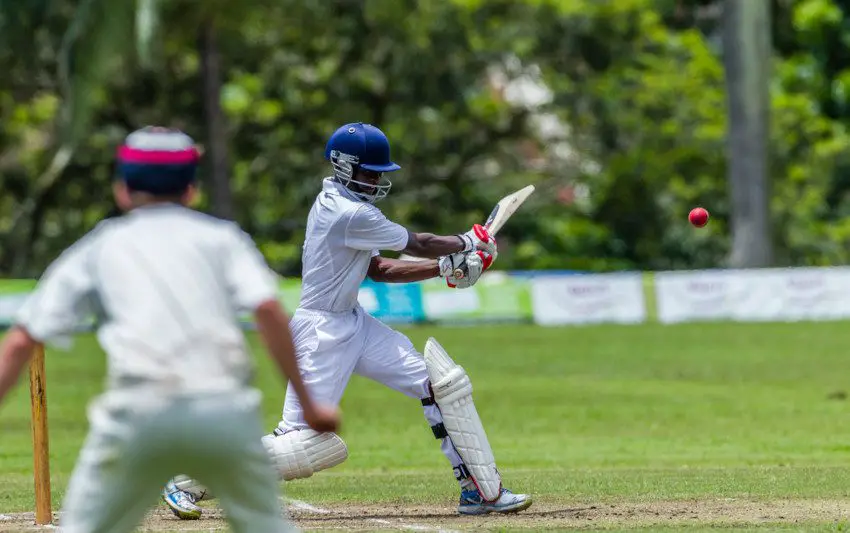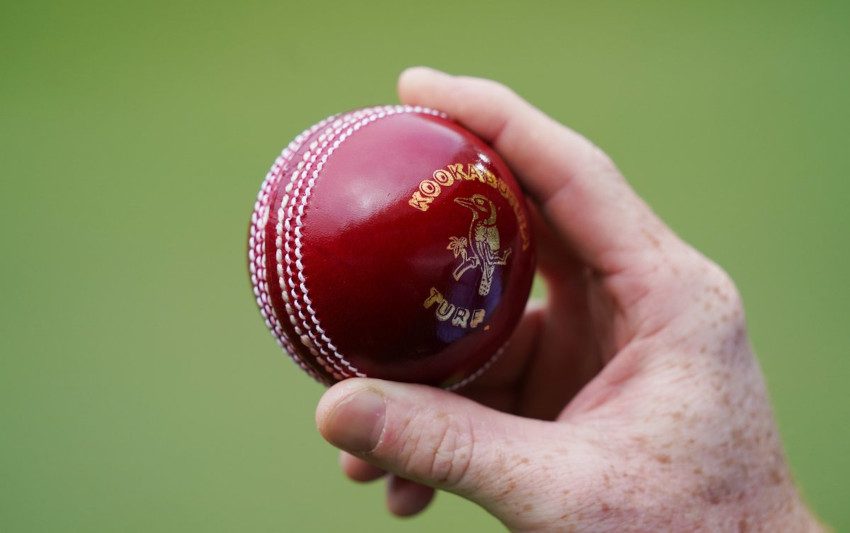Table of Contents
In this guide I’m going to be looking at all the different cricket shots that are available to batsmen. I’ll also discuss the strategy and approach to selecting an appropriate shot to the ball that has been delivered.
The aim is to help readers understand shot selection and to hopefully make them more prolific run scorers when they take to the field.
What are Cricket Batting Shots?
Cricket shots are the actions taken with the bat when faced with the bowler’s delivery. Certain shots are only appropriate for particular balls. Firstly, there are orthodox shots which can be split into two sections – front foot and back foot shots. There are 14 batting shots in total – split between the two sections.
In addition, there are 11 unorthodox shots which have come into the game more recently. Orthodox shots are classic examples from the coaching manuals and have been part of the game of cricket for centuries. Unorthodox shots are innovations – some of which are named after certain batsmen – and have largely been used as new weapons in the limited overs formats.
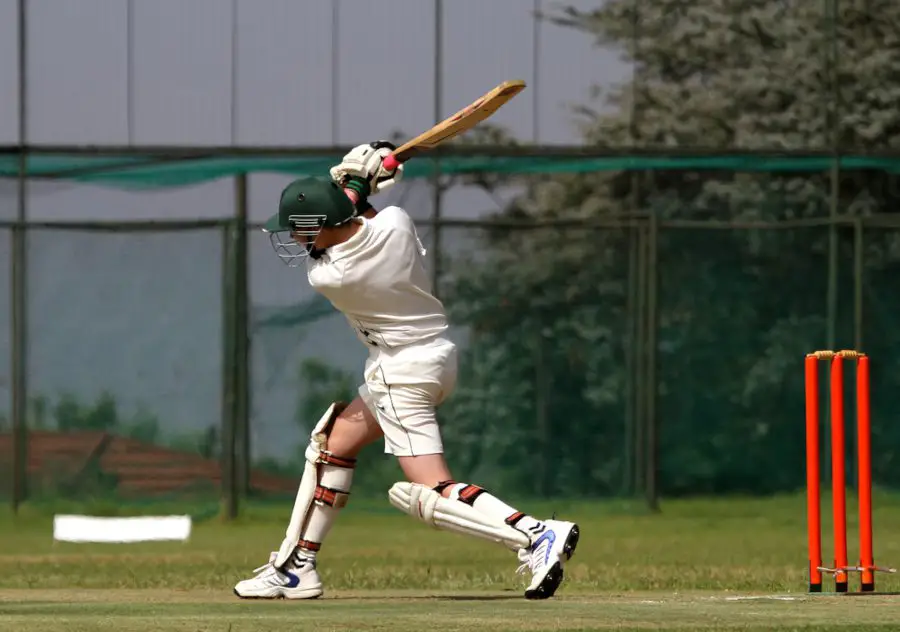
How to Select Which Shot to Play
Orthodox cricket shots are made as a direct reaction to the bowler’s delivery. The batsman may have as little as half a second to react and decide what they will play. Within that brief timeframe, there are four main decisions to be made:
- Play an attacking shot
- Play a defensive shot
- Leave the ball and let it pass through to the wicket keeper
- Evade the ball if it may cause them injury otherwise
Those decisions will be based on the speed, trajectory and positioning of the ball (whether it is on the leg side, the off side, or if it is straight). If a ball is wide of off stump or leg stump, the batsman can choose to let it pass through to the wicket keeper. If it’s travelling towards their body and looks as if it might be dangerous, it’s time to get out of the way.
However, in this guide, it’s all about the shots that are played.
Shot selection can also be based on field placement. As you work through the full list of shots, it would be useful to refer to my guide on fielding positions.
Unorthodox shots can be premeditated but they can also react to the actual delivery. I’ll explain a little more when we get to that section.
All Types of Cricket Shots
Front Foot Shots
Straight Drive
A straight drive is an attacking shot which is played to a straight ball which reaches the bat on the half volley. If executed correctly, the ball will travel almost directly past the bowler in a narrow arc between mid off and mid on.
Players with the best techniques tend to execute the straight drive better than most. In the modern day, Kane Williamson and Virat Kohli are two of the better players of this shot.
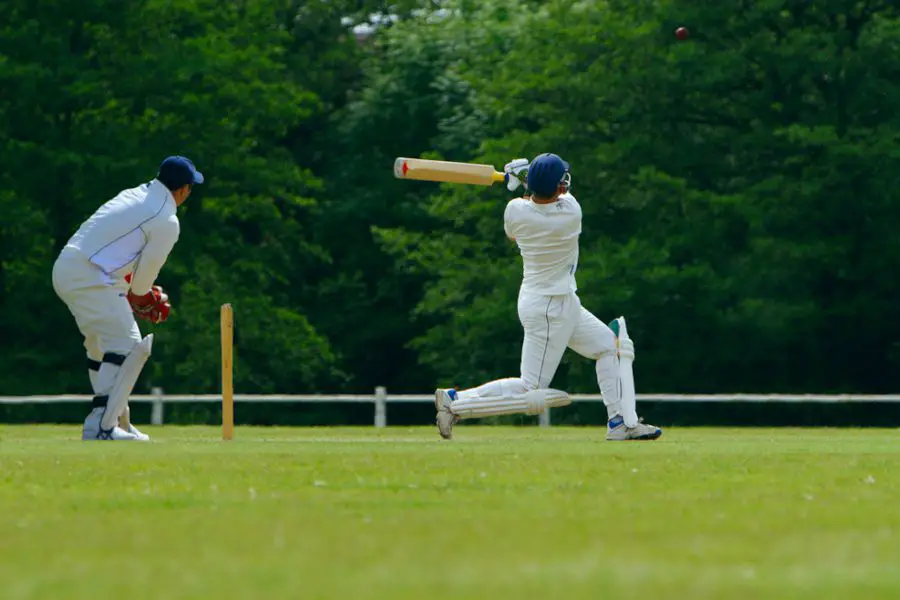
Cover Drive
The cover drive requires a similar technique to the straight drive. The only real difference is the direction of the ball so, this shot will be played to a full delivery which pitches outside of off stump. If played properly, the ball will disappear through those fielders placed between cover and extra cover.
Brian Lara was one of the greatest batsmen ever and he possessed a sublime cover drive. England’s Ian Bell was another elegant batter and his cover drive was one of his best shots.
On Drive
Another attacking shot, the on drive is played to a full delivery which pitches on or around leg stump. The batsman’s foot should aim to reach the ball close to where it lands and the ball should subsequently travel between mid-on and mid-wicket.
Williamson and Kohli feature highly again in this section but two attacking players, Quinton De Kock and David Warner, are among the best on drive players in the game.
Square Drive
Here we have another attacking shot which is similar to the first three on this list and, once again, the only difference relates to the position of the ball. When the delivery is full and quite wide of off stump, a batsman will look to play a square drive.
If the technique is correct, they will have opened the face of the bat and it will face towards point on the off side. The ball will then head between backward point and cover. This was one of the great Sachin Tendulkar’s best shots while Australia’s Mark Waugh is frequently mentioned as a strong player of the square drive.
Forward Defence
As the name suggests, this is a defensive shot and is played to a good length ball where scoring opportunities are limited. It should be played with a straight bat and it would travel slowly back to the bowler.
Having a strong defence used to be the basis for many test players in previous decades. England’s Geoffrey Boycott was a fine example while others with a good forward defence include Rahul Dravid.
Sweep
We’re back to attacking shots now and the sweep is played with a horizontal bat with the aim of despatching the ball to the square leg boundary. It’s played to full balls that usually pitch between middle and leg stump.
Traditionally, it’s played to the spinners and the sweep can be a dangerous shot for anyone to attempt against the quicker bowlers. Zimbabwe’s Andy Flower was one of the greatest sweepers of all while other useful exponents of this shot include AB De Villiers and Younis Khan.
Reverse Sweep
The reverse sweep was often seen as an unconventional shot but, in the modern day, it is so commonplace that it has become orthodox. The batsman must switch hands while the ball is in the air and play the reverse to a spinner’s full ball on the off stump. The ball should then be hit square on the off side.
Eoin Morgan was one of the first to play the reverse sweep with great regularity while others include AB De Villiers who is one of the game’s great innovators.
Front Foot Leg Glance
Completing our list of front foot shots is the leg glance. It’s another attacking shot although its success relies more on timing than power. It should be played to balls pitching on middle or leg stump and, because this is a front foot shot, the delivery will be a full one.
There is a wide arc for this shot and, depending on how early or late we play it, it can travel from anywhere between deep fine leg and midwicket. This was another one of Sachin Tendulkar’s best shots while Pakistan’s Inzaman-ul-Haq was also a fine exponent.
Back Foot Shots
Back Foot Drive
On to back foot shots now: In each case, the ball is pitched shorter than in cases where a front foot shot needs to be played. The batsman would tend to move back in his or her crease, maybe rock on to the back foot and play one of these shots.
The back foot drive is an elegant attacking shot and it can cover any short ball pitched on middle to off stump. The player uses power and timing to push their hands through the delivery and send the ball between cover and mid off.
In the modern game, Pakistan’s Babar Azam and Australia’s Steve Smith are two of the best players of the back foot drive.
Back Foot Defence
If a short ball is very straight and there is no width to play the back foot drive, batsmen should look to defend. The back foot defensive shot is, therefore, played to a straight delivery and the ball should travel, without too much power, back to the bowler.
I’ve already mentioned Geoffrey Boycott who had one of the best defensive games of all time and it’s worth watching videos of him to understand how the back foot defence is properly played.
Square Cut
This is an attacking shot and the square cut is the first in this section to be played with a horizontal bat. It is played to a short ball which offers width outside of the off stump and allows the batter to free their hands and play with power and timing to an area between backward point and extra cover.
Virat Kohli is often cited as the best player of the square cut but West Indian left hander Chris Gayle might dispute that claim.
Pull Shot
The pull shot is another to be played with a horizontal bat. This time, it should be used against short deliveries pitched on middle to leg stump. As the batsman rocks on to the back foot, they bring the bat through in a horizontal motion from the off side to the leg side. Depending on the speed and the point of impact, a pull shot can send the ball anywhere between deep fine leg and deep midwicket.
The West Indian pair of Viv Richards and Gordon Greenidge were breathtaking players of the pull while Ben Stokes is one of the best from the current crop of players.
Hook Shot
While the pull is best used for deliveries that reach the batsman between waist and shoulder height, the hook shot can be an effective weapon at balls that are above that level.
The technique for playing the hook shot is very similar to that of the pull. The bat comes from the off to the leg side in a horizontal motion but, because the ball is higher, it can travel higher in the air in an arc between fine leg and midwicket.
Kevin Pietersen played some brilliant hooks against Brett Lee at the Oval in the 2005 Ashes while many would argue that Australia’s Ricky Ponting was the best player of this shot.
Back Foot Leg Glance
There is really nothing to distinguish between the back foot leg glance and the front foot equivalent other than the length of the ball. The back foot glance would be played to shorter balls pitching on middle and leg to leg stump and the ball would travel anywhere between the fine leg region and midwicket.
This is another one of Sachin Tendulkar’s best shots and I recommend anyone to watch videos of him playing this in a match situation.
Unorthodox Shots
Upper Cut
The upper cut is played to short balls pitched outside the off stump. Typically, the bounce would be more extreme and the batsman may connect with the ball when it is some way above shoulder height.
The technique involves getting underneath the ball and cutting it fine, over the wicket keeper or first slip’s head. It would then travel down, in the air to the third man region.
There is a claim that Sachin Tendulkar invented this shot but the upper cut has been seen in cricket since before his time. Fellow Indian international Virender Sehwag also played this shot brilliantly, as did Zimbabwe’s Brendan Taylor.
Marillier Shot
This one is named after Doug Marillier, an international cricketer from Zimbabwe who is said to have invented it. It is very similar to the ramp which is covered later on and it’s played with a diagonal bat that forms a scoop for the ball to travel over the wicket keeper and down towards fine leg.
Perhaps the subtle difference between this and the ramp is that there is more power put into the shot as the batsman helps the ball ‘on its way.’
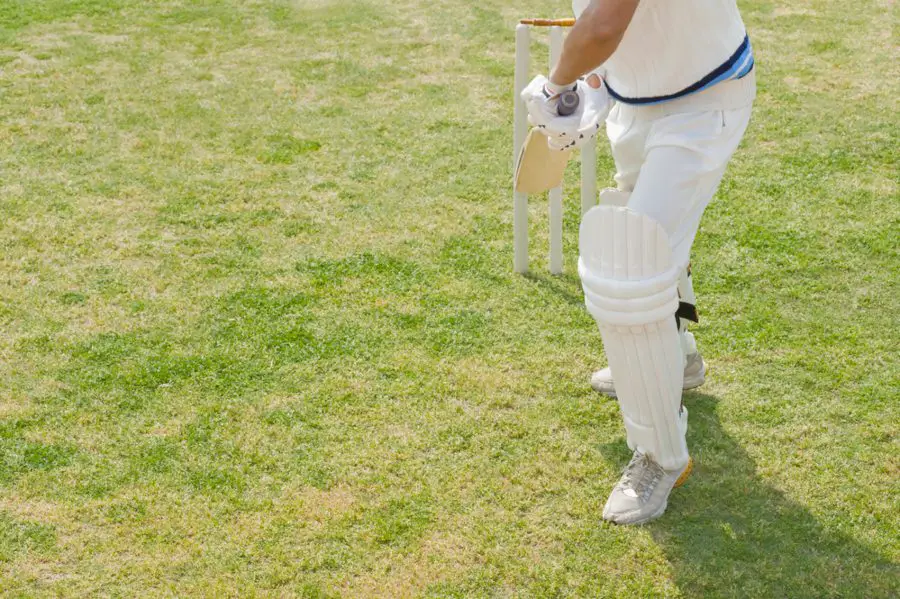
Helicopter Shot
While it’s not been named after him (yet), MS Dhoni is the one to make this shot famous. The helicopter is played to a very full ball, almost yorker length and the aim is to send it high towards the midwicket boundary.
Because the batsman needs to get underneath the full ball, they need immense strength and power. As a result, the bat finishes with a flourish above their head – similar to the blades of a helicopter.
Inside Out Shots
While the inside out is classed as an unorthodox shot, it’s arguably the most elegant in this section and reiles as much on timing as on power. It’s unusual in the sense that it plays the ball to the offside when the ball is pitched on leg stump.
As the delivery reaches the batsman, he or she moves inside it and plays it as a drive to extra cover. Usually it is lofted to go over the infield. I remember watching Ian Bell play this while, in the current game, Jason Roy also hits inside out effectively.
Switch Hit
Others may claim to have played it before him but Kevin Pietersen was the man who made the switch hit truly famous. I can remember him playing it against New Zealand and also against the great Murali when England played Sri Lanka.
It’s something of a premeditated shot and it requires the batter to switch hands as the ball is being delivered. A right handed batsman will now have the left hand at the bottom of the handle with the right hand at the top. The opposite applies to a left handed player.
The ball will now be hit on the leg side, usually high and in a wide arc between square leg and long on.
Eoin Morgan Reverse Sweep
It’s obvious as to who this shot is named after but how is the Eoin Morgan version different from the regular reverse sweep? England’s world cup winning captain has a conventional sweep and a reverse but this is almost a reverse reverse.
To explain, what happens is that Morgan premeditates a reverse sweep and then, when the ball isn’t quite in the right position, he reverses his hands again and hits the ball through the leg side.
Dilscoop
The conventional scoop shot was invented by the great Sri Lankan batsman Tillakaratne Dilshan. These days it is often just referred to as the ‘scoop’ while others still call it the Dilscoop in his honour.
It takes a brave batter to execute it as the ball travels almost directly over the batsman’s head. I can remember several commentators saying that the batter should have a good dentist before trying this out.
Dilshan himself explains that you have to play this to shorter balls. The batter gets down on one knee and makes a ramp with the bat. Get the head out of the way and play it over your left shoulder towards fine leg.
Reverse Scoop
As with many of these unorthodox shots, the reverse version of the scoop merely requires a change of hands. The set up is, however, exactly the same as that for the Dilscoop. The player gets down on one knee to a shorter ball and looks to form a ramp with an almost vertical bat.
This time, the hands are switched so that the ball will pass over the right shoulder and travel down towards third man. This is another shot that Jos Buttler plays well while this also forms part of AB De Villiers’ extensive repertoire.
Ramp Shot
The ramp shot relies more on the pace of the ball to do all the work. There is a question of timing involved but, if executed correctly, this requires little power on behalf of the batsman.
It’s usually played to a full ball from middle stump to the leg side. As it’s delivered, the batter crouches, places their bat straight out in front of them and creates a ramp for the ball to hit. If timed correctly and if the pace of the delivery helps out, the ramp shot can be very effective and the ball can often travel for six.
England’s Jos Buttler is, perhaps, the best player of the ramp shot in the game today.
Periscope
Some might argue that the periscope is an accident. I can remember seeing the ball hit a player’s bat when they’ve ducked out of the way, leaving that bat vertical like a ship’s periscope.
However, this is another modern unorthodox shot which is very deliberate. There’s a great video of Bangladesh’s Soumya Sarkar carrying this out. He twists his body while addressing a short, straight ball, deliberately leaves his bat in the air and diverts it over the keeper’s head.
Paddle Scoop
The set up for the paddle scoop is identical to that of the Dilscoop. The only difference is the length of the ball. We’ve seen that the Dilscoop and the reverse scoop are played to shorter balls but the paddle scoop is used against deliveries of a fuller length.
Batsmen can get on one knee, as they would for the Dilscoop. If the ball is full, they lose the ramp shape and hit the ball in a low, horizontal motion. It resembles paddling in a canoe and the ball will go squarer of the wicket on the leg side.
This is another shot that Doug Marilier played well while Ryan Campbell, who played for Australia and Hong Kong, is said to have invented it.
Closing Thoughts
Don’t worry if you aren’t fluent in all of these shots as some will come more naturally than others. Players are generally either front foot or back foot players and even the professionals can be split into either category. Alastair Cook had a brilliant square cut and was predominantly a back foot player but that didn’t stop him becoming England’s all time leading scorer in test match cricket.
At a far more amateur level, I’m also a back foot player. I can’t score too many runs off the front foot but, because of that, I have to try and play the forward defensive more effectively. Keep that in mind and remember that you don’t have to be perfect on both the front and back foot. As long as you have a solid defence in your weaker area, you can still make big scores.
It’s also been particularly fascinating to look at the evolution of the game and at some of the unorthodox shots that are now involved. I have to honestly say that I cannot play any of those and that’s why I’m just a club cricketer. However, by understanding them and their origins I can appreciate the modern players even more.

